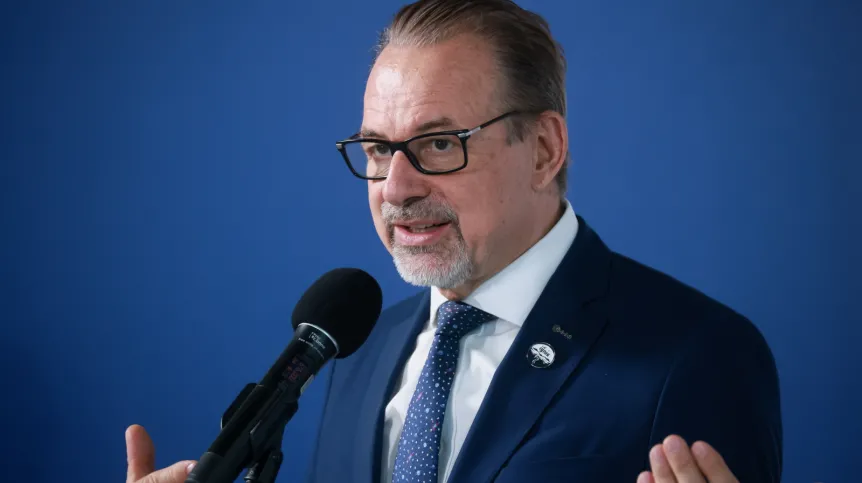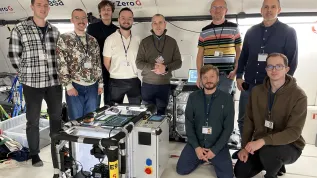
Polish astronaut Sławosz Uznański-Wiśniewski is an “exceptionally strong candidate” for active membership in the European Astronaut Corps, European Space Agency (ESA) Director General Josef Aschbacher has told the Polish Press Agency (PAP).
Speaking at Warsaw's Okęcie Airport, where he welcomed the Polish astronaut returning from the IGNIS science and technology mission to the International Space Station (ISS), Aschbacher praised Uznański-Wiśniewski’s performance and contributions to the mission.
“The IGNIS mission was, as its name suggests—fire. It was fire in the sense of activity and the enormous energy invested in it,” said Aschbacher. “Many experiments were conducted during the mission, the most of any commercial mission carried out by Axiom Space.”
The ESA Director General added that IGNIS was a European-led project with a distinctively international character, involving astronauts from Poland, India, the United States, and Hungary. “This highlights the international nature of space, which is the main area of ESA’s cooperation with many countries and many people,” he said. “Space knows no terrestrial borders.”
Asked whether Uznański-Wiśniewski could soon be appointed as a core member of ESA's astronaut corps, Aschbacher said ongoing talks would be needed with the Polish government. “A ministerial-level ESA Council meeting is scheduled for the end of this year, and this issue will also be discussed,” he added.
He highlighted Poland’s growing involvement in space over the last decade and expressed support for further development. “I would like to help Poland move from the early stages to the master stage, and Sławosz would play a very important role in achieving this goal,” said Aschbacher. However, he stressed that future steps would require cooperation between Uznański-Wiśniewski, the Polish government, and ESA.
Discussing possible future missions, Aschbacher mentioned additional ISS flights and mid- to long-term missions, including those planned under NASA's Gateway lunar orbit station program. He also expressed hope that Europe would eventually develop its own crewed spaceflight capability.
“Strong politicians with a clear vision are needed,” he said. “I hope that Poland will take up this challenge and become a European leader and champion in space.”
Aschbacher confirmed he has the final say on the astronaut corps appointment but declined to reveal his decision at this stage. “This discussion will take time and be influenced by many factors,” he said, reiterating that Uznański-Wiśniewski is “a good, extremely strong candidate.”
W środę Ministerstwo Rozwoju i Technologii (MRiT, które w czwartek zostało włączone do Ministerstwa Finansów i Gospodarki) poinformowało, że „rozważa udział dr. Sławosza Uznańskiego-Wiśniewskiego w podstawowym korpusie astronautów ESA”. Powołanie go do korpusu zależy m.in. od wysokości polskiej składki do ESA. Resort podał, że dąży do utrzymania finansowania na poziomie 400 mln euro – taki był polski wkład do ESA w latach 2022-2023.
Poland’s Ministry of Finance and Economy (formerly the Ministry of Development and Technology) stated it is “considering Sławosz Uznański-Wiśniewski’s participation in the ESA astronaut corps.” The decision is expected to depend in part on Poland’s financial contribution to ESA. The ministry noted it aims to maintain funding at €400 million, the same level as in 2022–2023.
Anna Bugajska (PAP)
abu/ agt/ mhr/













